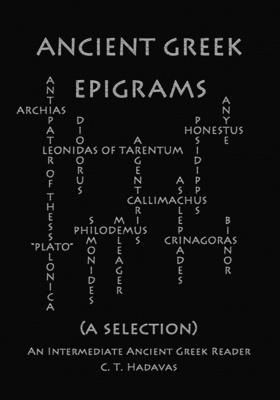This book provides vocabulary and commentary to 85 Ancient Greek epigrams arranged chronologically from the end of the sixth century BCE to the middle of the first century CE. Sixteen named epigrammatists are included, as well as two anonymous works. Although this selection from the thousands of surviving Ancient Greek epigrams is a personal one, examples from the four main thematic areas of epigrammatic writing are represented: funerary/sepulchral; dedicatory; amatory/erotic; display/epideictic. Slightly more than half of the epigrams are by Callimachus, Meleager, and Philodemus (often considered the three "greatest" Ancient Greek epigrammatists), but there are many interesting and fascinating examples from other writers as well. In addition to complete vocabulary listings for each epigram, all poetic, Ionic, and Doric forms are given their Attic equivalents. The notes also explicate syntactical and grammatical aspects that may be challenging for intermediate students, point out many (not all!) of the various literary/rhetorical figures and tropes that are employed, and provide information on historical and cultural issues raised by the poems. In order to encourage reading of the texts out loud (an essential component of most epigrams' literary nature, and one that often works hand-in-glove with the literary/rhetorical figures and tropes used), a section is provided that describes both the nature of the standard meter used in epigrams, the elegiac couplet, and the basic rules regarding Ancient Greek scansion. Finally, English translations of certain epigrams (some of which are provided with two or more versions, for the purpose of further comparison) are included to demonstrate the variety of ways that these poems have been appropriated and reproduced linguistically, aesthetically and culturally in the past four centuries.










